Batteries are essential components of many devices and applications, from smartphones and laptops to electric vehicles and renewable energy systems.
Importing batteries from China can be a lucrative business opportunity, as China is one of the world’s largest producers and exporters of batteries.
In this comprehensive guide, we will walk you through the essential steps and provide valuable insights to help you successfully navigate the process of importing and shipping batteries from China.
In 2021, China exported $2.83B in Batteries, making it the 1st largest exporter of Batteries in the world. At the same year, Batteries was the 213th most exported product in China.
The main destination of Batteries exports from China are: United States ($352M), Hong Kong ($249M), Germany ($223M), Poland ($111M), and Japan ($94.3M).
Data from: OEC
Benefits of Importing Batteries from China
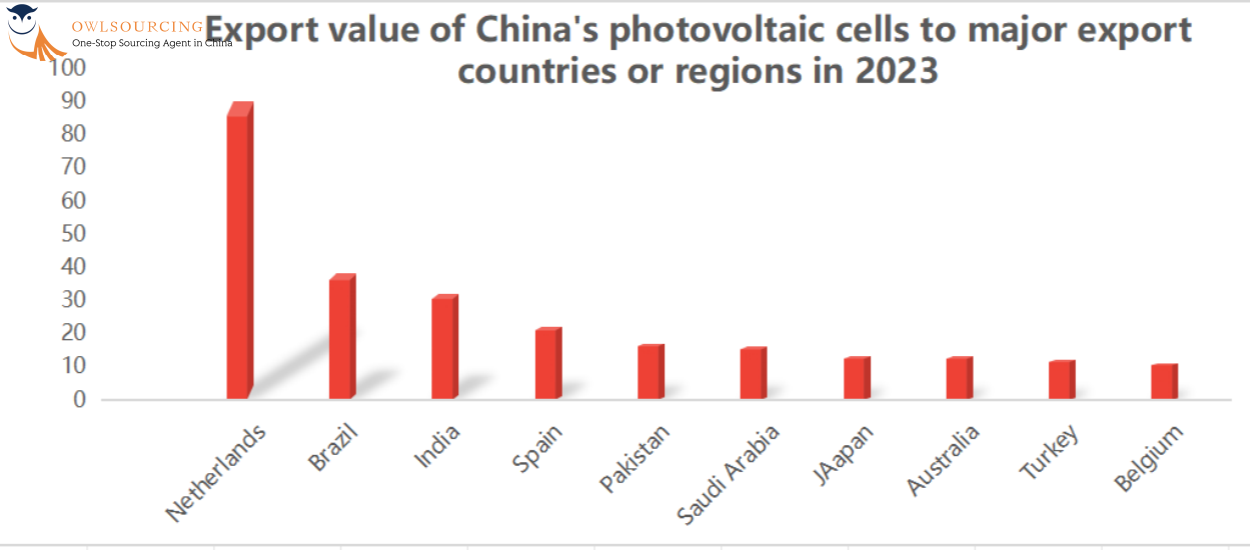
- Cost-Effectiveness: Chinese manufacturers often offer competitive prices due to lower production costs and economies of scale.
- Variety of Battery Options: China has a plethora of battery manufacturers offering a wide range of products. Whether you’re looking for lithium-ion batteries or specialized battery types, China has a vast selection to choose from. This variety allows you to find the perfect match for your specific requirements.
- Customization: Chinese manufacturers often provide customization options to meet specific requirements of their clients.
- Advanced Manufacturing Capabilities: China is known for its advanced manufacturing facilities and capabilities, which often result in high-quality batteries.
- Market Growth: The growing demand for electric vehicles and renewable energy storage worldwide is driving the growth of the battery industry in China, making it a lucrative market for importers.
Can I Import Lithium Batteries?
The demand for lithium batteries has increased ever since the world shifted to renewable energy and other eco-friendly technologies. These lightweight and energy-dense batteries operate a wide range of devices and technologies.
Lithium-ion batteries vary in size, shape, and power capacity. The larger ones serve in EVs, which require extensive travel ranges, while the smaller versions are extensively used in smartphones, pacemakers, and many more.
Besides, lithium batteries are important in utilizing renewable energy sources, such as solar and wind power. They allow for efficient storage of energy harvested from these sources for use at any instance in time.
Regulations in the United States Concerning the Import of Lithium Batteries
The DOT regulates the importation of lithium batteries. Importers have to adhere to the regulations, check the right UN classification codes, and stay up to date on revised packaging and shipping standards to avoid customs delays while ensuring safety and environmental compliance.
Why Lithium Batteries Require Careful Handling
According to the UN system, lithium batteries fall under Class 9 dangerous goods, which is a category recognized by the U.S. Customs and Border Protection.
They create certain specific safety hazards, including:
- Thermal Runaway: The batteries, when damaged, may overheat and catch fire or explode.
- Leakage: The electrolyte fluids may cause skin and eye irritation.
- Cargo Damage: A fire from poorly packaged batteries can destroy shipments around them.
Lithium Battery Imports Regulations in the U.S.
Lithium batteries face strict regulations within the US because of the possible environmental hazards they can pose when it comes to safety.
Due to their surrounding and sometimes overheating, leakage of internal fluid might ignite causing fire hazards.
Thus the Regulatory Framework
- Most of the U.S. regulations regarding lithium battery imports harmonize with international standards set by the United Nations (UN).
- Additional instructions and industry specifications are provided in 49 CFR Parts 100–185.
- According to the UN classification system, lithium batteries fall into Class 9 dangerous goods, a classification also followed by the U.S. CBP when inspecting such imports.
Common Hazards in Lithium Battery Imports
- Thermal Runaway: A damaged battery can create a chain reaction or short circuit, leading to overheating, fires, or explosions.
- Leakage: Electrolyte fluids in batteries can irritate skin and eyes upon contact.
- Cargo Damage: Fires from improperly packaged or damaged batteries can destroy surrounding cargo.
Compliance with Key Agencies
Importers must comply with regulations from several agencies depending on the mode of shipment:
- UN Manual of Tests and Criteria – Transportation Testing (UN 38.3)
- Pipeline and Hazardous Materials Safety Administration (PHMSA): Hazardous Materials Regulations (HMR)
- International Air Transport Association (IATA): Dangerous Goods Regulations (DGR)
- International Civil Aviation Organization (ICAO): Typically follows IATA’s standards
- For air shipments, verification of the correct UN classification code must be made.
UN Classification Codes for Lithium Batteries
- UN3480: Lithium-ion batteries
- UN3481: Lithium-ion batteries packed with equipment
- UN3481: Lithium-ion batteries contained in equipment
- UN3090: Lithium metal batteries
- UN3091: Lithium metal batteries packed with equipment
- UN3091: Lithium metal batteries contained in equipment
Types of Lithium Batteries and Import Rules
1. Lithium-ion
- Li-ion is used in laptops, smartphones, and EVs.
- To be transported, it must be charged less than 30%.
- Shipment as an independent item on passenger aircraft is forbidden.
2. Lithium-Metal
- Present in small devices like watches and hearing aids.
- Transportation on passenger aircraft is forbidden.
3. Lithium-Polymer (Li-Po)
- Drones and RC toys have Li-Po.
- Manufacturing costs are higher, although less prone to overheating.
4. Lithium Iron Phosphate (LFP)
- Now gaining favor for EVs because it’s cheaper and more robust.
5. Lithium Cobalt Oxide (LCO)
- Previously popular in small electronics but now less common due to rising cobalt costs.
6. Lithium Manganese Oxide (LMO)
- Best for high-temperature applications like cordless tools and hybrid cars.
- Understanding the characteristics and regulations surrounding these battery types can help importers avoid compliance issues.
Why Compliance Matters
Regulatory compliance will ensure safe and efficient lithium battery imports, protecting the environment and public safety.
Partnering with experienced customs brokers can help smooth out the process and address all the complexities associated with the importation of lithium batteries.
Start your lithium battery import today and grab this growing market share to contribute towards a sustainable future!
Overview of the Chinese Battery Market
The market for batteries is projected to grow more than four-fold between 2021 and 2030.
While the market was sized at nearly 112 billion U.S. dollars in 2021, it is expected to reach the size of almost 424 billion U.S. dollars in 2030.
Data from: statista.com
The Chinese battery market is one of the world’s largest, driven by domestic demand and international exports.
The country boasts a robust manufacturing infrastructure with advanced technology and extensive experience in producing high-quality batteries.
Investments in new energy projects reached a significant 5.2 trillion yuan. The lithium battery sector received 1.2 trillion yuan, making up about 22.6% of the total, while energy storage and hydrogen energy sectors received 950 billion yuan (approx. 18.1%) and 490 billion yuan (approx. 9.5%)
Essential Steps for Buying Lithium Batteries From China
Importing batteries from China involves several critical steps to ensure a smooth process and minimize potential issues. Let’s explore these steps in detail:
1. Documenting Your Battery Imports Correctly
- Proper documentation is crucial for a smooth import process. Ensure that all required documents such as the Bill of Lading, Commercial Invoice, Packing List, and Certificates of Conformity are accurately filled and submitted.
- Comply with the import/export regulations of both China and your country to avoid any legal complications. It’s advisable to work with a shipping agent who is familiar with the regulations concerning battery imports.
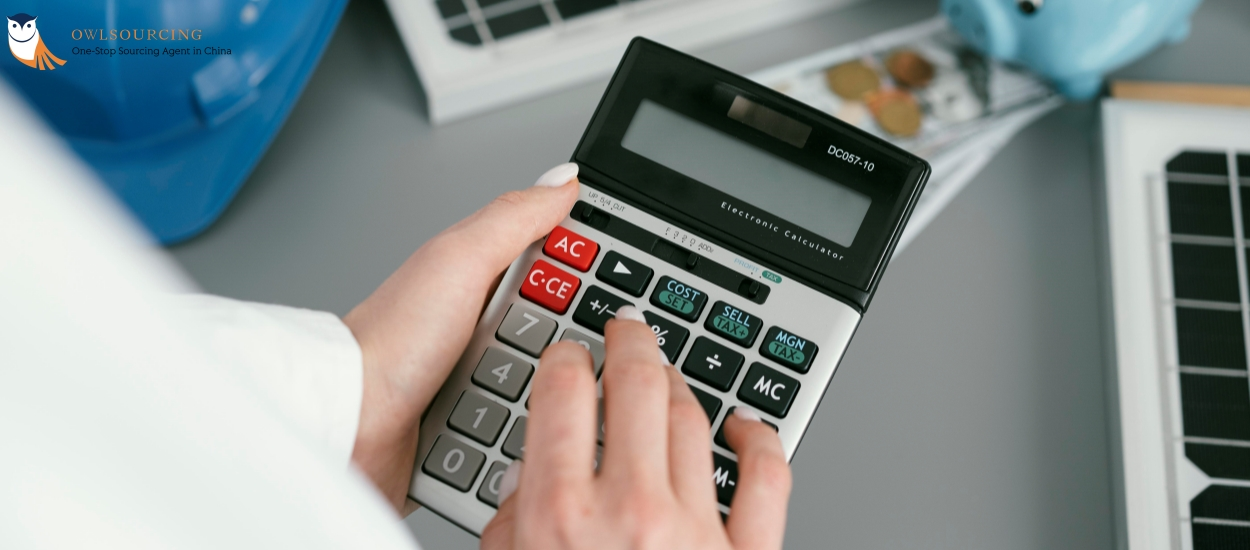
Budgeting and Pricing:
- Accurately calculating the total cost of importing batteries will help in budgeting and pricing strategies, ensuring that you maintain desired profit margins while remaining competitive in the market.
Cost Breakdown:
- Product Cost: The purchase price of the batteries from the manufacturer.
- Shipping Costs: These include the freight charges, insurance, and any other costs related to transporting the batteries from China to your country.
- Customs Duties and Taxes: Import duties and taxes imposed by the customs authorities in your country.
Suggested reading: Import Tariffs from China to US
- Other Costs: Additional costs such as inspection fees, warehousing fees, and any other charges that may arise during the import process.
Trade Agreements:
- Check if your country has any trade agreements with China that could provide favourable duty rates or other benefits for battery imports.
- Utilizing preferential trade agreements can significantly reduce import duty costs and enhance the cost-effectiveness of the import process.
Navigating import duties can be complex, especially for batteries due to their potentially hazardous nature.
Research the specific regulations governing battery imports in your country to ensure compliance and factor in any duty costs when calculating your overall expenses.
3. Ensuring Stringent Quality Control in Battery Imports
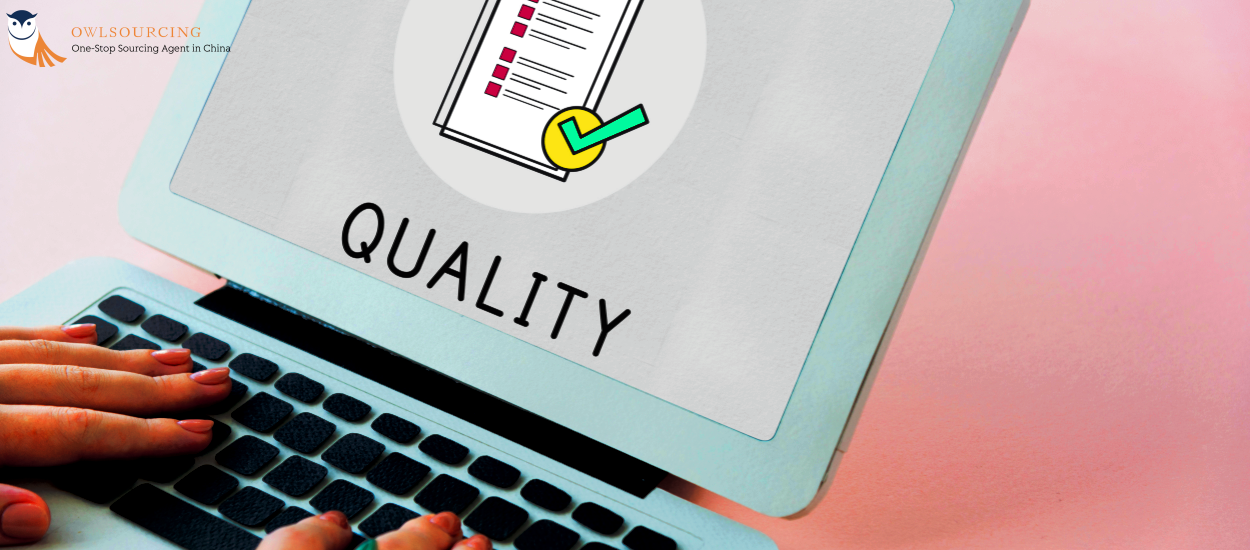
Understand Regulations and Standards:
- Familiarize yourself with international and Chinese standards and regulations regarding lithium-ion battery quality and safety, which is crucial for battery importers.
- Understand the requirements for certifications like CE, RoHS, and UN38.3 which are commonly associated with lithium-ion battery products.
A. Pre-Production Inspections:
- Conduct pre-production inspections to verify the quality of materials and components that will be used in the manufacturing of the batteries.
- Ensure that the supplier understands and agrees to comply with your quality standards.
B. In-Process Inspections:
- Conduct inspections during the manufacturing process to ensure that the batteries are being produced to the specified quality standards.
- This can include checking the assembly process, quality of welding, and other manufacturing processes.
C. Pre-Shipment Inspections:
- Conduct a pre-shipment inspection to verify the quality and quantity of the batteries before they are shipped.
- Check for visual defects, electrical performance, and compliance with safety standards.
D. Third-Party Inspection Services:
- Consider hiring a third-party inspection service to conduct independent inspections at different stages of the production and before shipment.
- Third-party inspectors can provide an unbiased assessment of the quality of the batteries.
E. Continuous Monitoring and Feedback:
- Maintain open communication with the supplier to provide feedback on the quality of the batteries and address any issues that arise.
- Continuous monitoring and evaluation of the supplier’s performance can help in ensuring consistent quality.
4. Sourcing Reliable Battery Suppliers in China
Sourcing reliable battery suppliers, especially for lithium-ion batteries, in China can be a meticulous process due to the plethora of manufacturers and the critical nature of battery quality and safety.
Here are steps and strategies to ensure a successful sourcing venture:
A. Identifying Trusted Battery Manufacturers
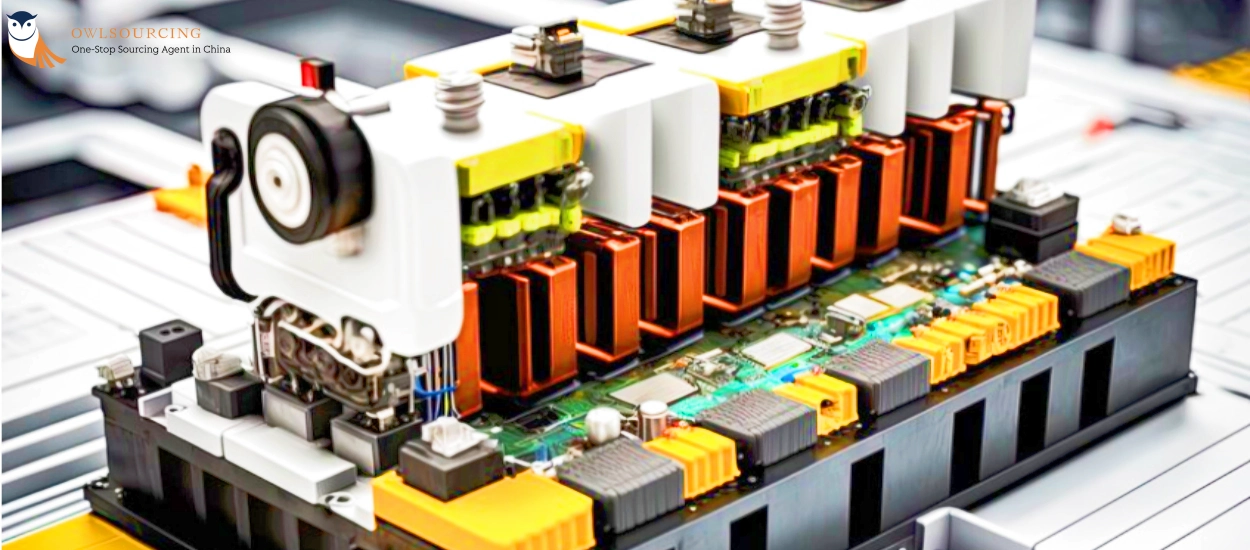
B. Research and Verification:
- Conduct comprehensive research to identify reputable battery manufacturers in China. Utilize online platforms, industry directories, and trade shows.
- Verify certifications such as ISO 9001, CE, RoHS, and UN38.3 to ensure the suppliers comply with international and Chinese battery safety and quality standards.
C. References and Reviews:
- Seek references and read reviews from other buyers. A trusted battery manufacturer should have a good track record and positive reviews in the industry.
D. Site Visits:
- If possible, visit the manufacturing facilities to assess the operational standards, quality control measures, and the overall working environment.
E. Sample Testing:
- Request samples and conduct independent testing to evaluate the quality, performance, and safety of the batteries.
5. Effective Negotiation Strategies with Battery Suppliers

Establish Clear Requirements:
- Clearly outline your requirements including quality standards, delivery timelines, and payment terms before entering negotiations.
Build a Relationship:
- Establishing a good relationship with suppliers can lead to better negotiation outcomes. Understanding the cultural nuances and business etiquette in China can also be advantageous.
Price Negotiation:
- While price is a critical factor, ensure it does not compromise the quality of the batteries. It’s advisable to have a well-understood price-quality balance.
Volume Discounts:
- Explore the possibility of volume discounts. Buying in larger quantities may lead to better pricing but ensure the supplier can meet the quality standards consistently.
Long-term Agreements:
- Consider negotiating long-term agreements with suppliers. Stable, long-term relationships can lead to better terms and ensure a reliable supply chain.
Payment Terms:
- Negotiate favourable payment terms that can provide financial flexibility. Structured payment terms, like milestone-based payments, can also be aligned with delivery and quality checkpoints.
6. Selecting the Ideal Shipping Methods for Batteries
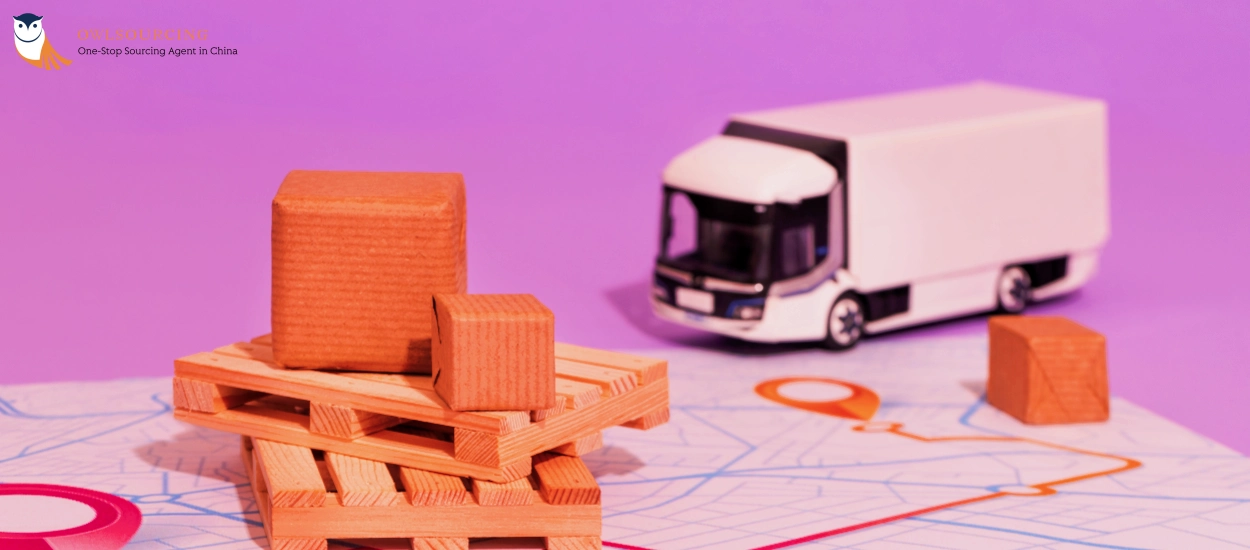
Shipping batteries requires careful consideration due to their classification as dangerous goods.
Familiarize yourself with different shipping methods available for battery transportation, such as air freight or sea freight.
Each method has its advantages and limitations in terms of cost, transit time, and regulatory compliance.
Assessment of Regulations:
- Familiarize yourself with international and local regulations governing the shipping of batteries, including lithium-ion battery shipping regulations. Compliance with UN38.3, DOT, IATA, and other relevant standards is imperative.
Choice of Shipping Method:
- Evaluate various shipping methods such as air, sea, or road transportation based on cost, time, and the nature of batteries being shipped.
- For urgent deliveries, air shipping might be ideal, although it’s usually costlier and has stricter regulations.
- Sea shipping may be more cost-effective and suitable for larger quantities, albeit slower.
Packaging Compliance:
- Utilize appropriate lithium battery labels, and hazmat labels, and ensure secure packaging to prevent movement and damage during transit.
Insurance:
- Opt for comprehensive insurance coverage to safeguard against potential damages or losses during transportation.
Special Considerations for Marine Shipping
Marine shipping standards related to lithium batteries continue to evolve. For instance, there are additional restrictions by ocean carriers on the shipment of used EVs because of risks associated with ageing lithium-ion batteries.
Generally, new EVs encounter fewer obstacles, provided that transport requirements have been met.
Special Considerations for Ocean Shipping
Ocean carriers are developing their own safety standards, especially in the transportation of electric vehicles.
New Electric Vehicles: Accepted, generally, as long as all other regulations for transport are followed.
Used Electric Vehicles: Generally declined due to the increased liability with aged lithium cells.
7. Managing Logistics for Smooth Battery Imports

- Customs Compliance: Have a clear understanding of the customs requirements, and tariff codes (e.g., batteries HS code), and ensure all documentation is accurate and complete to avoid delays.
- Coordination with Suppliers: Coordinate closely with your battery suppliers in China to ensure that they adhere to the agreed shipping schedule and packaging standards.
- Inventory Management: Employ an effective inventory management system to monitor stock levels, and incoming shipments, and to plan reorders efficiently.
- Freight Forwarder: Engage a reliable freight forwarder with experience in handling battery shipments. They can provide valuable insights, handle customs clearance, and ensure smooth transit.
- Continuous Improvement: Analyze the performance of your logistics processes periodically, gather feedback from stakeholders, and implement improvements to enhance efficiency and cost-effectiveness.
8. Understanding Battery Import Regulations

Research and Education:
- Acquaint yourself with international and local battery import regulations. This includes regulations set forth by organizations like the International Air Transport Association (IATA) and the Department of Transportation (DOT).
- Familiarize yourself with the Harmonized System (HS) codes for batteries, which are used for customs tariff and statistical purposes.
Certifications and Standards:
- Understand the certifications required for battery imports such as CE, RoHS, and UN38.3. These certifications ensure that the batteries meet the required safety and quality standards.
Classification and Labeling:
- Be versed in the proper classification and labelling of batteries for customs purposes. This includes knowing the distinction between lithium metal and lithium-ion batteries and ensuring the accurate labelling of battery shipments.
Complying with Battery Import Laws
To comply with battery import laws, you may need to obtain permits or certifications from relevant authorities in your country.
These could include UN38.3 certification for lithium batteries or Material Safety Data Sheets (MSDS) for certain battery chemistries.
Collaborate closely with your suppliers to gather all necessary documentation and ensure legal compliance throughout the import process.
Overcoming Challenges in Battery Importation
Importing batteries, especially lithium-ion batteries, can pose unique challenges due to their hazardous nature, strict regulatory framework, and quality concerns.
Here’s how you can address these challenges:
Addressing Common Hurdles in Battery Imports

Importing batteries can present several challenges, such as regulatory changes, fluctuating exchange rates, or unexpected delays at customs.
Stay informed about industry updates and be proactive in adapting to changes that may impact your supply chain.
Maintain open lines of communication with your suppliers and logistics partners to address any issues promptly.
Risk Mitigation in the Battery Supply Chain
- Supplier Vetting: Conduct thorough vetting of battery suppliers to ensure they have a track record of quality and compliance. Engage in regular audits and inspections to verify their adherence to quality standards and regulatory compliance.
- Insurance Coverage: Obtain comprehensive insurance coverage to mitigate financial risks associated with battery importation, including potential damages during transit.
- Real-time Monitoring: Employ real-time monitoring systems to track the movement of battery shipments, ensuring timely delivery and addressing issues as they arise.
Ensuring Stringent Quality Control in Battery Imports
Develop a comprehensive quality control process that includes regular factory audits, random product inspections, and performance testing.
This will ensure that the batteries you import meet your customers’ expectations and comply with safety regulations.
- Suggested reading: Benefits of China Sourcing Agents
Key Insights for Profitable Battery Imports from China
- Prioritize compliance with international regulations governing lithium-ion battery transportation.
- Conduct thorough research and due diligence when selecting battery suppliers.
- Regularly inspect the quality of batteries through factory visits and sample testing.
- Plan logistics carefully, considering transportation modes, packaging requirements, and customs clearance procedures.
- Establish robust after-sales service channels and clear warranty terms to ensure customer satisfaction.
Read More:
Final Thoughts
Importing batteries from China can be a profitable endeavour if done correctly. By understanding the regulations, finding reliable suppliers, managing logistics effectively, and establishing strong after-sales support, you can navigate the complexities of this process with confidence.
Certainly, you can also entrust these tasks to a China sourcing agent. We assist you in completing a series of processes from sourcing to shipping, saving you a substantial amount of costs and money.

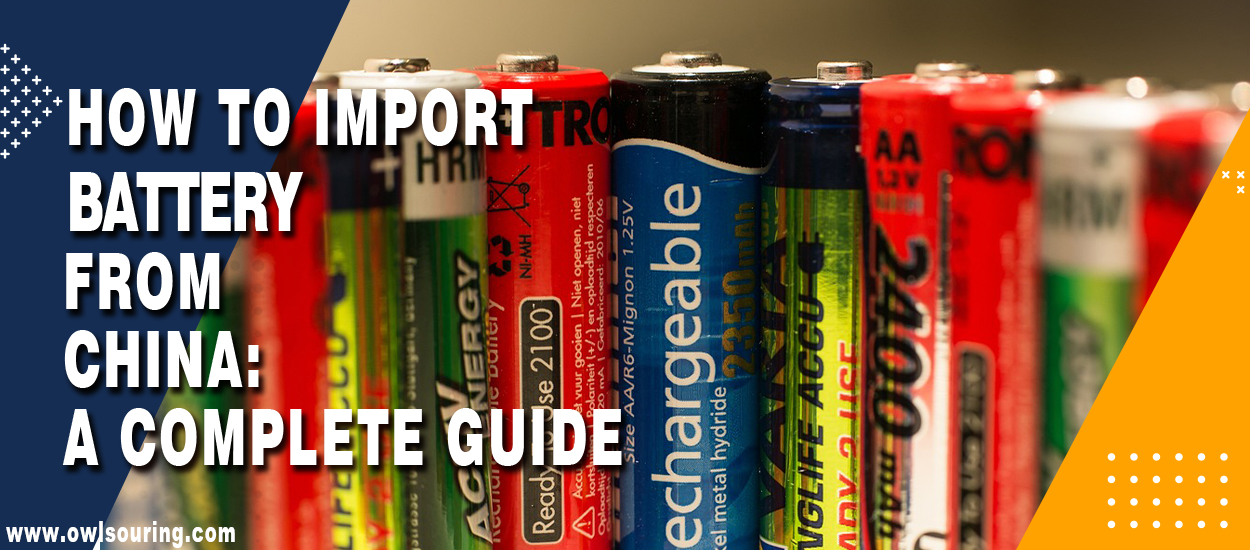

7 thoughts on “How to Import Battery from China: A Complete Guide”
I really like your tips
I’m currently exploring the prospect of importing batteries from China, and I’m curious about the best practices and considerations involved in this process. Are there specific regulations, quality standards, or reliable suppliers you would recommend? Additionally, any insights on shipping logistics and potential challenges would be greatly appreciated.
Thank you for your interest in importing batteries from China! It’s important to consider regulations and quality standards like IEC, find reliable suppliers with good track records on platforms like Alibaba, and manage shipping logistics, especially since batteries are classified as hazardous materials. Also, be prepared for potential challenges such as customs delays and quality inconsistencies. Good luck with your venture, and don’t hesitate to reach out for more detailed guidance!
your tips on bringing in batteries from China are just what I needed.
I’m so glad to hear that! If you have any more questions or need further assistance as you proceed with importing batteries, feel free to reach out. Happy importing!
Thanks for the useful info! Planning to import batteries for my gadgets, and this guide made it seem less daunting. Any tips on finding reliable suppliers in China?
Hi Julia. Thanks for your comment! I’m glad the guide was helpful.
For finding reliable suppliers in China for batteries, it’s crucial to verify their certifications and compliance with international safety standards.
Consider attending trade shows like the Canton Fair or using B2B platforms like Alibaba to evaluate suppliers.
Also, asking for samples and references from their existing clients can provide additional assurance.
Happy importing!